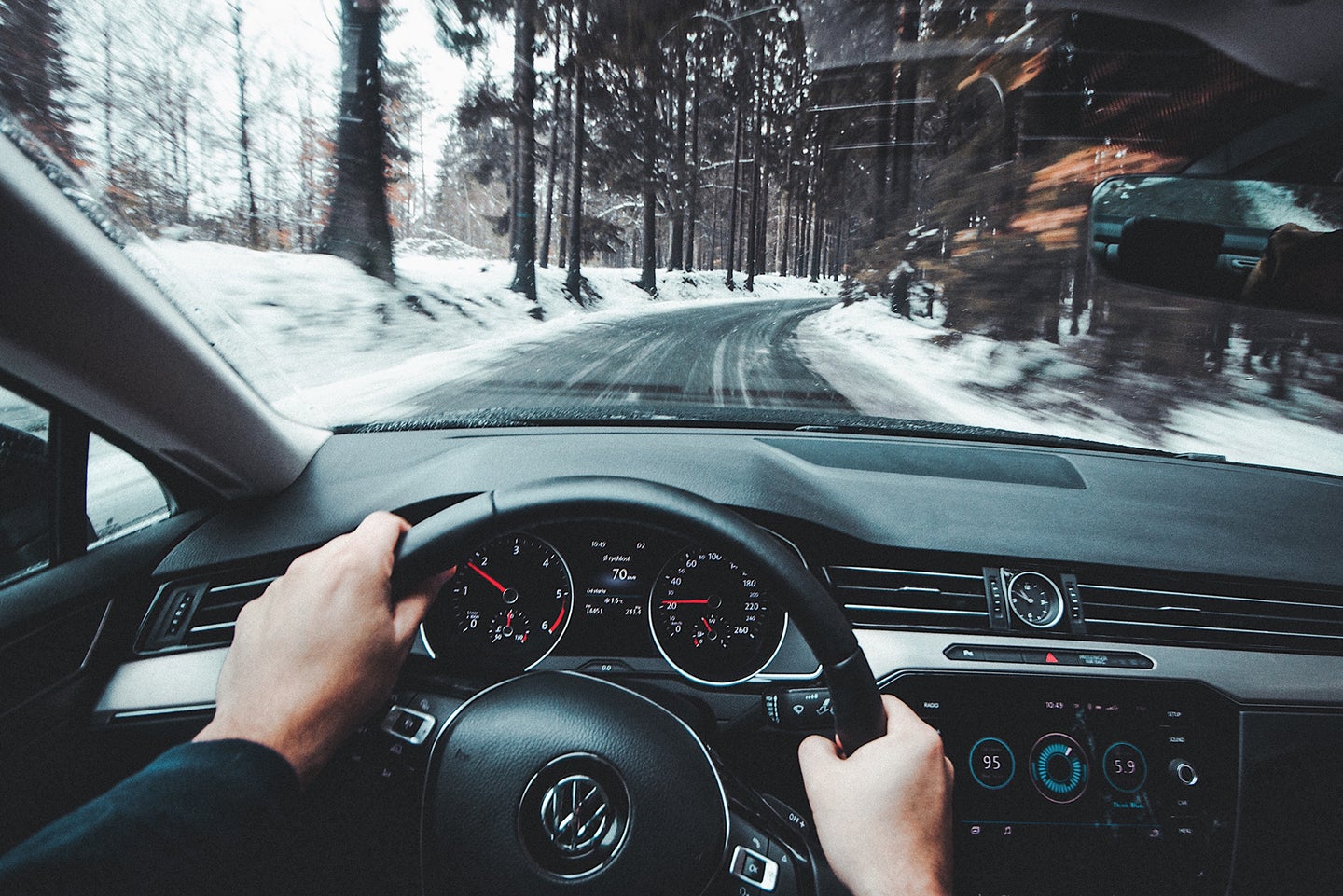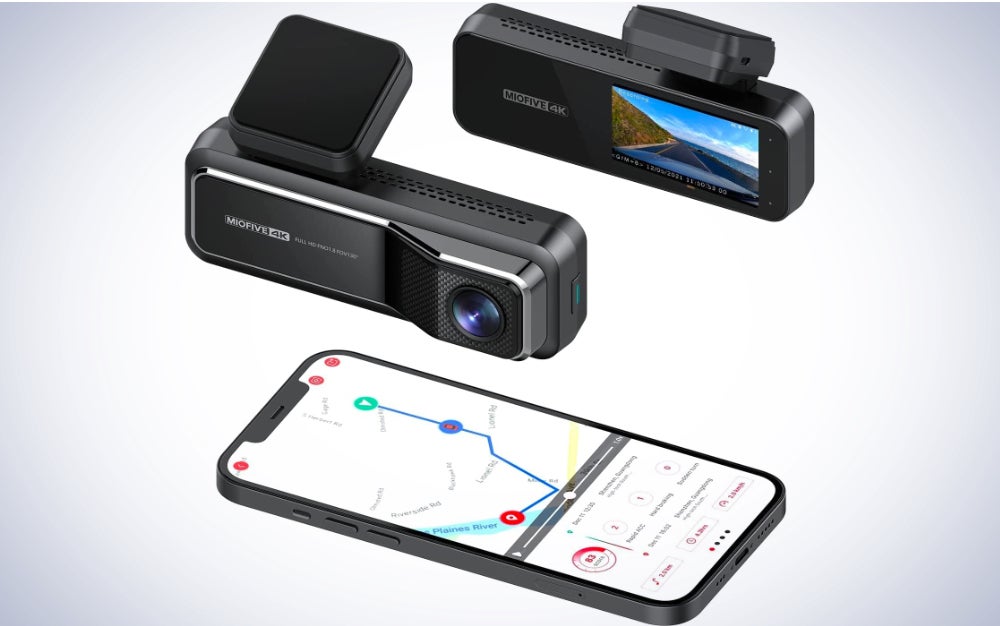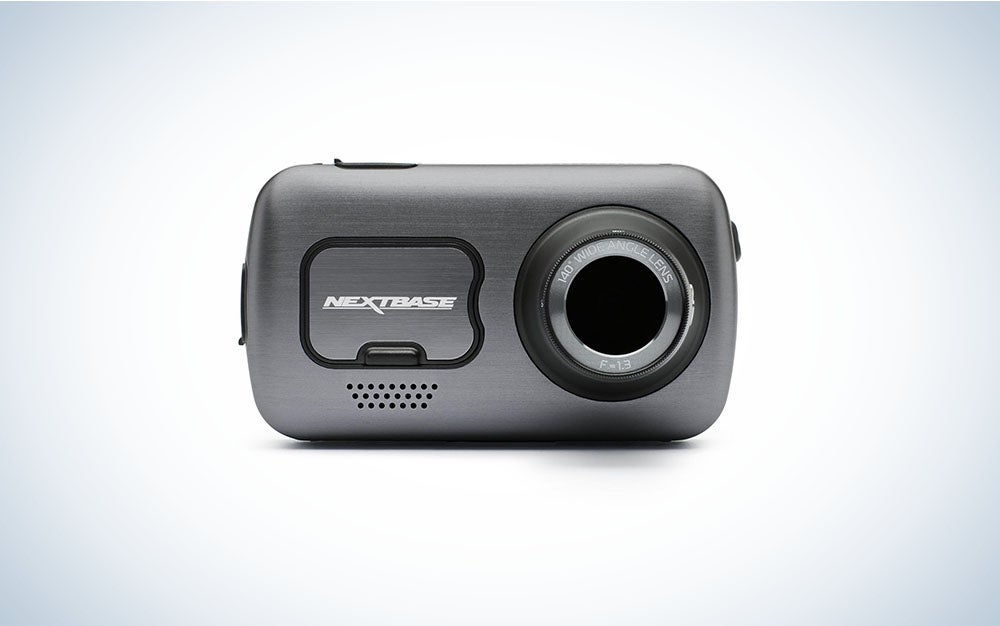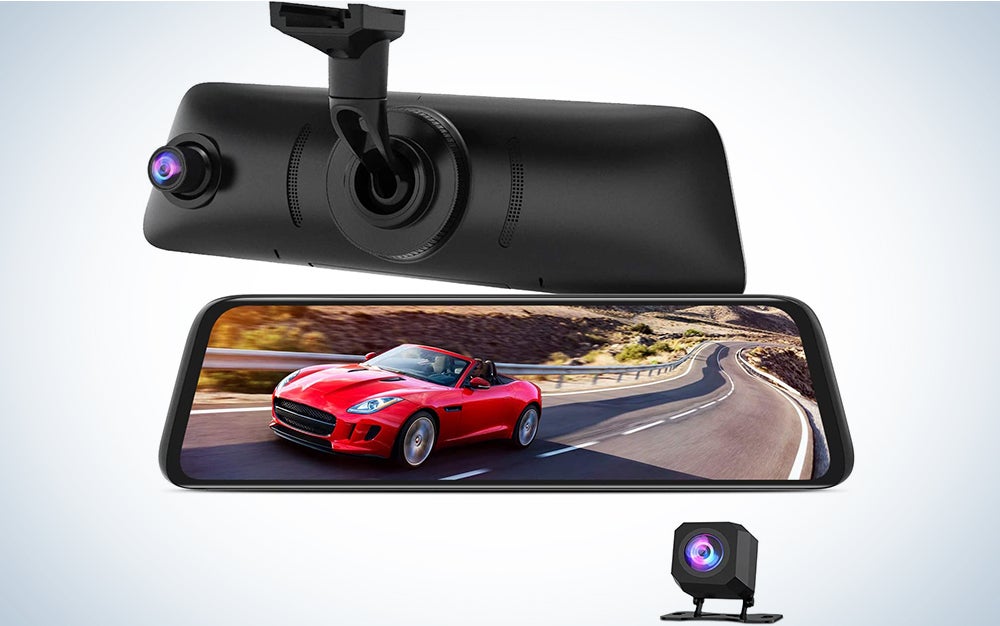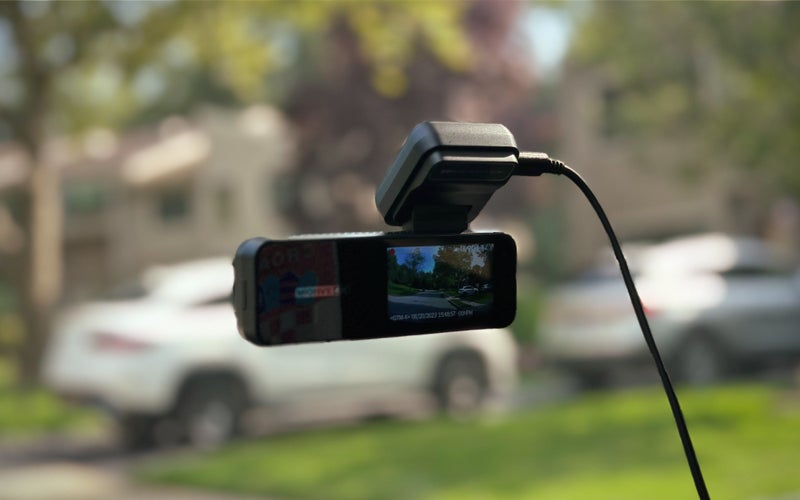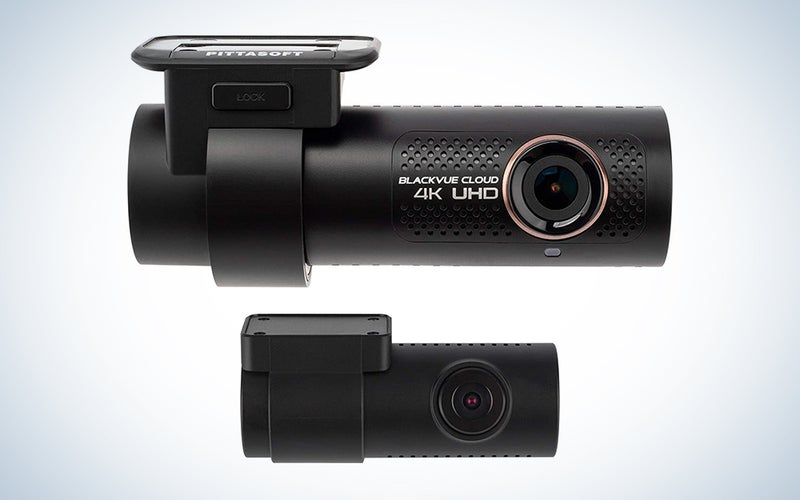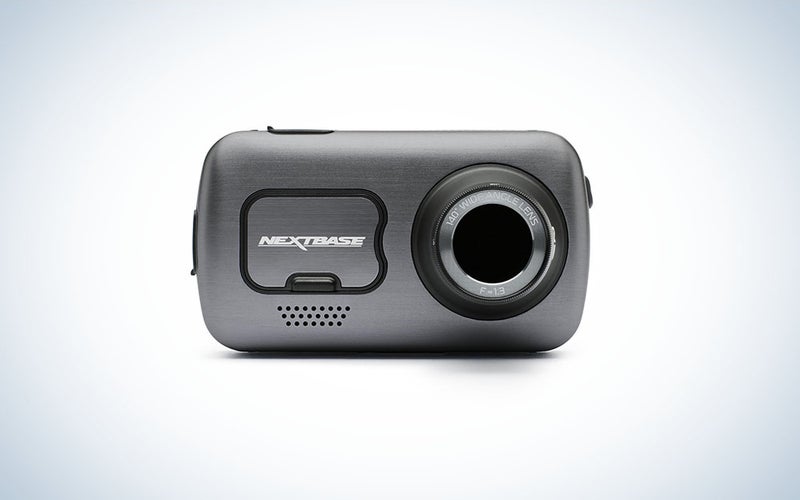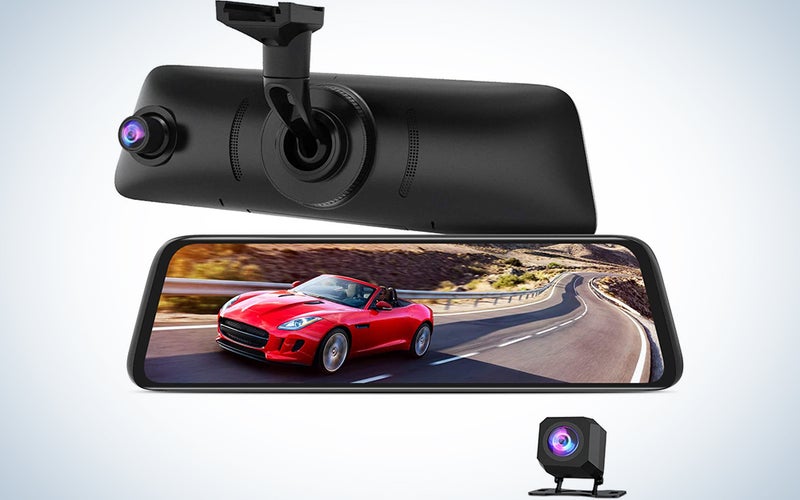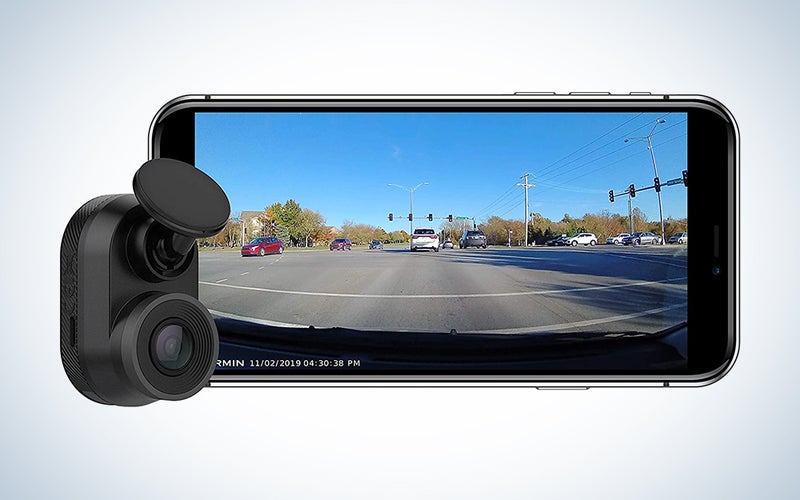We may earn revenue from the products available on this page and participate in affiliate programs. Learn more ›
Dash cams are an affordable and convenient car accessory that any driver should consider adding to their personal or work vehicle. Ensuring that you have a record of your time driving can make a huge difference when dealing with unexpected collisions, tickets, and other traffic-related incidents, opening up the possibility of saving money on insurance and even limiting your liability in some situations by providing proof.
Dash cam systems come in a variety of shapes and sizes, and usually operate by automatically recording footage to an internal drive or some form of removable media, like a microSD card. Some systems even offer safety features that will augment an otherwise basic automotive package, making them a cost-effective and highly customizable alternative to purchasing dealership upgrades. The best dash cam for your purposes will be one that fits well into your existing routine and offers you extra peace of mind when you’re behind the wheel.
- Best high-resolution: Miofive Car Dash Cam
- Best high-capacity: BlackVue DR900X-2CH
- Best with extra safety features: Nextbase 622GW Full 4k HD in Car Dash Cam
- Best large-screen: AUTO-VOX V5PRO
- Best space-saving: Garmin Dash Cam Mini
- Best budget: Pathinglek 3-Inch Dash Cam
The best dash cams: Reviews & Recommendations
Best high-resolution: Miofive Car Dash Cam
Brandt Ranj / Popular Science
The Miofive Car Dashcam offers 4K video recording and a small screen-based interface with touch controls and additional settings available through its mobile app on iOS and Android. The dashcam connects to your smartphone via WiFi. This dashcam produces incredibly clear video in daylight and night, with a wide field of view capturing many lanes of traffic. The camera also records your location via GPS, and sound if you enable its microphones. Parking mode allows the camera to record even when you’re out of the vehicle, and all of the dashcams videos are saved onto a built-in memory card.
Best high-capacity: BlackVue DR900X-2CH with 256GB microSD Card
Amazon
The BlackVue DR900X-2CH is a great option for capturing no-compromise 4K video at high capacities. It’s hardwired to your fuse panel to allow for uninterrupted operation as well as parking mode, and it’s even compatible with nano-SIM cards for LTE connectivity and cloud uploading so you can potentially expand your storage even further.
Best with extra safety features: Nextbase 622GW Full 4k HD in Car Dash Cam
Nextbase
The 622GW from Nextbase is a cut above the rest when it comes to safety thanks to the ability to detect accidents and alert emergency services if you become unresponsive. This car dash cam has Alexa built-in and records in 1440p resolution at 30 frames per second.
Best large-screen: AUTO-VOX V5PRO
AUTO-VOX
The Auto-Vox V5PRO is a fantastic option for retrofitting older vehicles or installing in models with limited space. It fully replaces your existing rearview mirror with a reflective surface that doubles as a 9.5-inch screen, and it offers front and rear recording and parking monitoring. This is a dash cam, rearview mirror, and backup camera all in one.
Best space-saving: Garmin Dash Cam Mini
Amazon
If you’re thinking small, the Garmin Dash Cam Mini is a robust option with your name on it. The incredibly compact unit attaches to your windshield and records 1080p footage at a 140-degree angle straight to a micro SD card. Controls and footage review are available over WiFi via the proprietary app.
Best budget dash cam: What you get for under $50
Dashboard cameras under $50 lack some of the quality ones might expect from more expensive products, which could be an issue if resolution and picture clarity is a priority. Still, it’s better to have a dash cam than to have none at all, so if you’re willing to sacrifice a bit on the flexibility of your device, something like the Pathinglek 3-Inch Dash Cam might do the trick. Be aware that at these prices, reliability and user-friendliness are not always guaranteed even in the best budget dash cams.
Things to consider when buying the best dash cams
There are so many types of dash cam products on the market that it can be hard to know where to begin. Like most recording devices, dash cams are available in a wide range of recording resolutions and media size compatibilities. Some models place extra emphasis on added safety features or screen functionality, but many with these extra features struggle to maintain an unobtrusive form factor. In this article, we’ll go over a few key considerations to help you find the best dash cam for your particular situation.
How high should the resolution be?
If the most obvious feature of a camera is its ability to capture and store video and images, the next logical consideration is determining the quality of the images. For dash cam imagery to be effective at documenting potential traffic events and other unexpected incidents, the resolution and subsequent level of detail that a model can deliver should be a clear sticking point. Most basic models run at a minimum resolution of 1080p and offer a wide-angle lens that can effectively capture events outside your car, and these specs are usually adequate in the vast majority of situations.
Situations that might necessitate a higher image resolution include driving larger vehicles that sit higher above the road surface, thereby expanding the field of coverage required by a dash cam in order to effectively capture and translate on-video events. Rideshare drivers may also benefit from a higher resolution as an added degree of insurance due to the need to record both inside and outside the car.
Some models are capable of capturing video at resolutions of up to 4K, which is optimal for working drivers in any situation where insurance and liability are key considerations. The high-level detail of the images provided by a 4k system can typically capture a great level of detail at longer distances, which can assist in contextualizing events and paint a clearer picture of driver accountability.
What type of screen is best?
Some dash cams are minimalist in design and sport simple functionality using onboard button controls, but the large majority of dash cams include a screen interface of some kind, varying widely in form and finish. A screen is one of the most accessible design features that can allow users to optimize their dash cam system, and it’s hard to recommend a model that doesn’t include one unless the exclusion is an intentional design feature.
The most basic use of a dash cam screen is to assist users in proper setup and framing of the image in their camera’s view to ensure that the footage contains the desired area, but screens can also display a whole range of pertinent information, including recording time, GPS coordinates and safety assist features. Screen interfaces are also useful in granting users quick access to advanced settings and menu control without the need to click through a variety of arcane button combinations, which can no doubt come in handy if you’re trying to make a quick adjustment to your dash cam while you’re behind the wheel.
Some models integrate rear backup camera compatibility, enabling you to install and view rear camera imagery while in reverse right from the dash cam screen. Even more impressively, these models usually exist in traditional rearview mirror form factor, allowing users to install them in place of their factory mirror and enjoy normal rearview functionality with the added bonus of backup and dash camera technology in an unassuming and subtle package. Every driver has their own tastes when it comes to using screens and adding them to their car, and fortunately, there are enough models of dash cam both with and without screens to satisfy the techie and the minimalist in all of us.
Are you short on space?
Sometimes, there’s just not enough space on your dashboard to warrant adding more car accessories. Whether you drive a smaller car, have a car with a short windshield, or you use a phone holder and can’t spare the extra space, there are plenty of reasons why a bulky dash cam will serve to harm more than help in certain situations. Fortunately, smaller form factor dash cams are available from a variety of manufacturers, and they’re designed to offer maximum functionality and convenience while keeping these situations in mind.
In addition to saving on space, it’s important to consider whether a dash cam is large or eye-catching enough to warrant its removal from your car each time you park. Some models are big enough that they may be targeted for theft and end up resulting in situations where your car sustains unintended damage simply because there’s a high-tech device with a camera sitting on your dashboard. In situations like this, opting for a subtle design or a small and compact form that can easily hide out of view behind your rearview mirror is desirable.
FAQs
Q: How long do dash cameras record for?
Dash cams usually store image and video files on removable media, a design factor that keeps these units compact and allows users to easily transfer footage when required. Due to the interchangeable nature of removable media and memory cards, each capacity can hold a varying amount of footage, and this factor is further impacted by the quality and resolution of the camera and the resulting file sizes. Generally speaking, a dash cam running at 1080p will fill a 32-gigabyte SD card in about 37 hours. A capacity like this is more than enough for someone who is looking to use their car for daily commutes and infrequent road trips, but an individual who plans on spending more time behind the wheel may want to opt for an SD card with a larger capacity.
The biggest perk of choosing storage media with a larger capacity is the ability to hold more footage over time, which may be ideal if you’re on a long road trip or if you’re a truck driver since these situations are likely to require storing and reviewing footage from potentially hours prior. Dash cams typically record video files in segments of three to five minutes, creating a new file at each increment, for easy file navigation and to keep file sizes down for more convenient transferring. When choosing a dash cam, it’s important to consider whether you’re looking for a system that records continuously, or for a system that stops recording when the storage media is full. Many systems will automatically record over the oldest footage when the storage becomes full, so it’s important to choose one that will treat your footage in the desired way.
Q: How much should you spend on a dash cam?
There’s no right price for a dash cam—no matter what, you’ll want a quality camera to maximize safety. You may not want all the bells and whistles that come with the most expensive models, but be aware that cheaper dashboard cameras may not always deliver on functionality.
Q: What should I look for when buying a dash cam?
Dash cams are meant to enhance user safety and cover liability in the event of unexpected accidents and other events. While every model on the market records and stores images, several designs add even more safety features to the base functionality, including the usage of tools that monitor the driver’s alertness, constant GPS connectivity, and onboard accident detection. If you are buying a dash cam primarily for the added safety benefits, consider a model that can augment your user experience even further in this department.
Lane-departure warning systems are a commonly added safety feature in dash cams, since these devices technically always have an eye pointed at the road. In these systems, the dash cam monitors the position of the lane lines relative to the car’s direction of travel and will alert the driver when they are drifting out of the lane with an audible alert, a visual alert, or both. In the event of an accident, some dash cams rely on an internal G-force sensor to detect, record, and automatically lock footage, and some of these models will even automatically alert emergency services in the event you can’t reach the camera after an accident is detected.
GPS connectivity is another common safety feature that’s a bit more subtle and is often used to display the driver’s direction of travel on a compass. However, some dash cams embed live GPS information into the recorded footage, which is an added advantage in any case where video must be reviewed after an accident or after receiving a ticket and proof of geographical location is needed. This feature can contextualize footage upon review, thereby making the footage even more useful at providing evidence to insurance companies or courts.
Final thoughts on the best dash cams
Regardless of your style of driving or specific situation, there are more reasons to drive with a dash camera than there are to go without. They offer an added level of safety and liability protection that is extended even further when considering options that integrate cloud recording, app support, and backup camera compatibility. If you want to get the most out of your car, a dashboard camera is one of the most affordable and convenient car accessories to mitigate many of the potential unknowns of getting behind the wheel.
